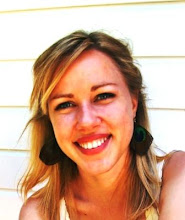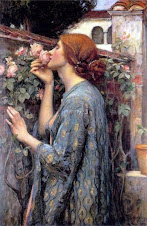I feel guilty for living in the suburbs. There is so much wrong with them. Alienation from what we consume (where does it all come from?). Alienation from what we discard (where does it all go?) The suburbs don’t mesh with the life of connectedness and consciousness that I say I want to live. But I still live here. Enlightened hypocrite that I am, I am always coming up with ways to atone for the rootlessness of my suburban life. In an upstairs bedroom, I am growing cucumbers, squash and carrots in a tiny planter. I will till the soil and eat of the fruits of my labor, I tell myself. I have even started buying black market Amish groceries from a Pennsylvania Dutch farmer named Yoder who trucks it down to a discreet drop-off site every two weeks. It’s not quite “local”, but it’s better than apples grown in Argentina. This sense of unique character, of more than passing connection to the soil underneath my feet, assuages my conscience. But nothing does more than the bluegrass did.
On the first fine Sunday of the year, I stroll down to Lyon Park. Sunshine and warm temperatures have filled the grassy block with sound. Dogs bark at the pale-legged joggers. A Spanish-speaking nanny scolds a blonde child. Orioles – are they?- yes, orioles, early migrants, sing in the leafless tree, boding more pleasant days to come, though it snowed so heavily last week. A Frisbee whizzes by; the chains on the swing set squeak and whine.
I am not listening for these everyday suburban sounds, though. I am listening for the bluegrass players. Catherine, the friend through whom I order my Amish produce, told me that they come every two weeks, rain or shine, from all corners of the Washington beltway. Where are they?
Now.
Now I hear it floating above the other sounds – plucking, twanging, crooning – faint upon the air, unamplified. The sound I hear is the music of place itself. It’s bluegrass, come to settle in this suburb, like a strange bird blown far off course, but here all the same.
Though I never knew they were here until this week, just three blocks from my house meets a floating bluegrass jam session of the Capital Area Bluegrass and Old-time Music Association (CABOMA). The Association, a non-profit corporation dedicated to the loving preservation of bluegrass, boasts about 150 dues-paying members. On the second and fourth Sundays of every month, at least a handful of members haul out their strings for four hours of melodic fellowship here in Arlington. On sunny days like today, dozens gather around the picnic tables with no song sheets among them, playing, talking, singing, laughing. Occasionally, they do all four at once.
Today, the neighbors amuse themselves with their springtime pursuits, not paying much attention, and the bluegrass players occupy the eastern half of the park, a tribe unto themselves. I sit beneath a tree, as if on the invisible border dividing the groups. The bluegrass crowd stands around in ragged half-moons, tapping their toes, gesturing to each other with their fiddle bows. Most seem on the far slope of fifty, and one sports a beard with three years’ growth. The cut of their hair, the style of their clothing, looks a little hill-country. Their music seeps across the lawn unamplified, unsynthesized. It falls on my ears strangely soft and raw, reaching hardly farther than a human voice speaking. To hear it, you have to get quiet. You have to get close.
Just so, a young man with a mental disability stands on the outside of the circle, rocking back and forth on the balls of his feet, trying to listen.
A middle-aged woman, clearly a beginner, saws away at her fiddle strings.
Later I learn that this first part of the day is set aside for a “slow jam”, where novices learn from longtime bluegrass musicians.
Kim, a middle-aged mother who plays a Gibson guitar and calls herself new to bluegrass, tells me how much she likes the slow jams. She’s seen all kinds of instruments here – even a recorder and a cello – she reports with wide eyes.
The tune picks up. It’s a spiritual with a melody I recognize from the soundtrack of O, Brother, Where Art Thou?, and my feet begin to tap as if of their own accord. What would happen if I joined them? I played the flute once, in my California childhood, and I wasn’t that bad. I can still count beats and read music. I halfway suspect they might even find room for a flute out here, as blades of grass will bend beneath a passing foot. But out of some reverence, I wouldn’t try. Anyway, I sold my flute on Craigslist for $75 in 2005.
But neither can I go pull myself away. This group lays itself open with a trust I both envy and pity, leaving their expensive instruments unguarded among the roots of sheltering trees. While the novice fiddler grinds her way through a chorus, a guitarist, two banjo players, and a scruffy man with a mandolin go gently along with her. The song? “Let the Circle Be Unbroken.”
Like me, many of the bluegrass players transplanted near Washington, D.C. from another part of the country. John Seebach, a thirty-something staffer for an environmental non-profit, grew up in Kentucky, the Bluegrass State. He’s been coming to CABOMA’s jam session for the last five to six years. While we talk, he cradles a gleaming black mandolin against his chest and picks out sweet-sounding scales.
“It’s a funny thing,” he says, “I grew up in the city, Lexington, and I hear more bluegrass here than I did when I was growing up.”
That’s not so surprising. The Washington, D.C., area has actually had a strong bluegrass tradition since the 1950’s, when bluegrass first emerged as a recognized musical genre. Back then, the hill music inspired by poor Scottish and Irish immigrants to Appalachia morphed into its more popular form, led by D.C. area recording artists like Buzz Busby and the Bayou Boys, plus Bill Monroe and his Blue Grass Boys.
John Seebach is one of those, like Kim, who discovered bluegrass later in life. Others, like Tom Smith, can trace their bluegrass roots right back to the hill country where it came from. A white-haired, gap-toothed Missouri native and a National Incident Systems “guru” for FEMA, Smith doesn’t just have a guitar. He tells whoever will listen me that he has a Dobro resophonic guitar with a built-in resonator. It shines live polished silver in the late winter sun. He wears it around his neck with the side flat again his rib cage.
“Some people think it’s whiny, but me, I like it. It puts that high, lonesome sound in high, lonesome music. Before amplifiers, they needed something to cut through all that orchestra music so a guitar could still be heard. Some Czech brothers came up with a resonator. Now they got amplifiers. They don’t use resonators anymore, except some blues-players down in Memphis, and up in the hills of course. If you don’t have any electricity, what good’s an amplifier?”
Tom grew up in a place where amplifiers didn’t do much good.
“Hoo, boy!” he laughs, “Let’s put it like this: I saw very few strangers before I was 18.”
I ask how he came to live in Washington.
“Now that’s a sad story,” he says, deflating. Picking at the Dobro, he starts to sigh along to a mournful little tune from the next group over, something about train whistles and suitcases.
It turns out the Smith moved because of his ex-wife, a professor at the University of Maryland. They divorced after 27 years of marriage. He brightens visibly, though, at the sight of Alexia Roberts, a frizzy-haired woman in high-waisted pants. He met her playing bluegrass at a jam session.
“My current life’s companion,” he calls her, and strides along the grass to meet her with the gait of a man going in his own front door.
On the other side of the lawn, John Seebach has finished tuning his mandolin. He walks straight into the cadre of players, flicks his wrist until he catches the rhythm, and begins to pick away with a smile on his lips.
“That’s the thing about bluegrass,” he told me a little while ago, “I play in a couple of bands, but out here, you can just walk into the middle of a field of strangers. You all know the same music, and you can play together. Sometimes it’s just good to do that.”
The young man with a mental disability still watches them. Noticing him, a female banjo player (she likes to sing shrill harmonies), steps out to meet him. She takes him by the crook of the arm and guides him to the middle of their ragged half-moon, where he can watch her nimble fingers dance all over the truss board.
-
Bluegrass is indeed a funny bird to find in Lyon Park. In the one of the wealthier and well-educated areas of Virginia, and one of the most proudly secular, it’s a music about faith and poverty. Amongst the locked and shuttered homes of those who often fear their neighbors (I admit that I have gone online to memorize the faces of all registered sex offenders in a mile radius), it’s a music of trust and community.
The musicians, though, seem unfazed by any sense of discord with their surroundings. Perhaps it’s not so hard to reconcile. For the bluegrass players, the music is not ultimately about any particular place, but about the people the music came from, and the people it leads them to.
And by and by, several of the neighbors have stopped whatever they were doing to sit in the grass, tap their toes, and let a music of place – and people - wash over them while the sunshine ebbs.
All Clear!
-
Of all the memories, experiences and things I brought back from Uganda, I
have managed not to bring Malaria with me. I was so happy I had to share it
with ...
16 years ago






No comments:
Post a Comment